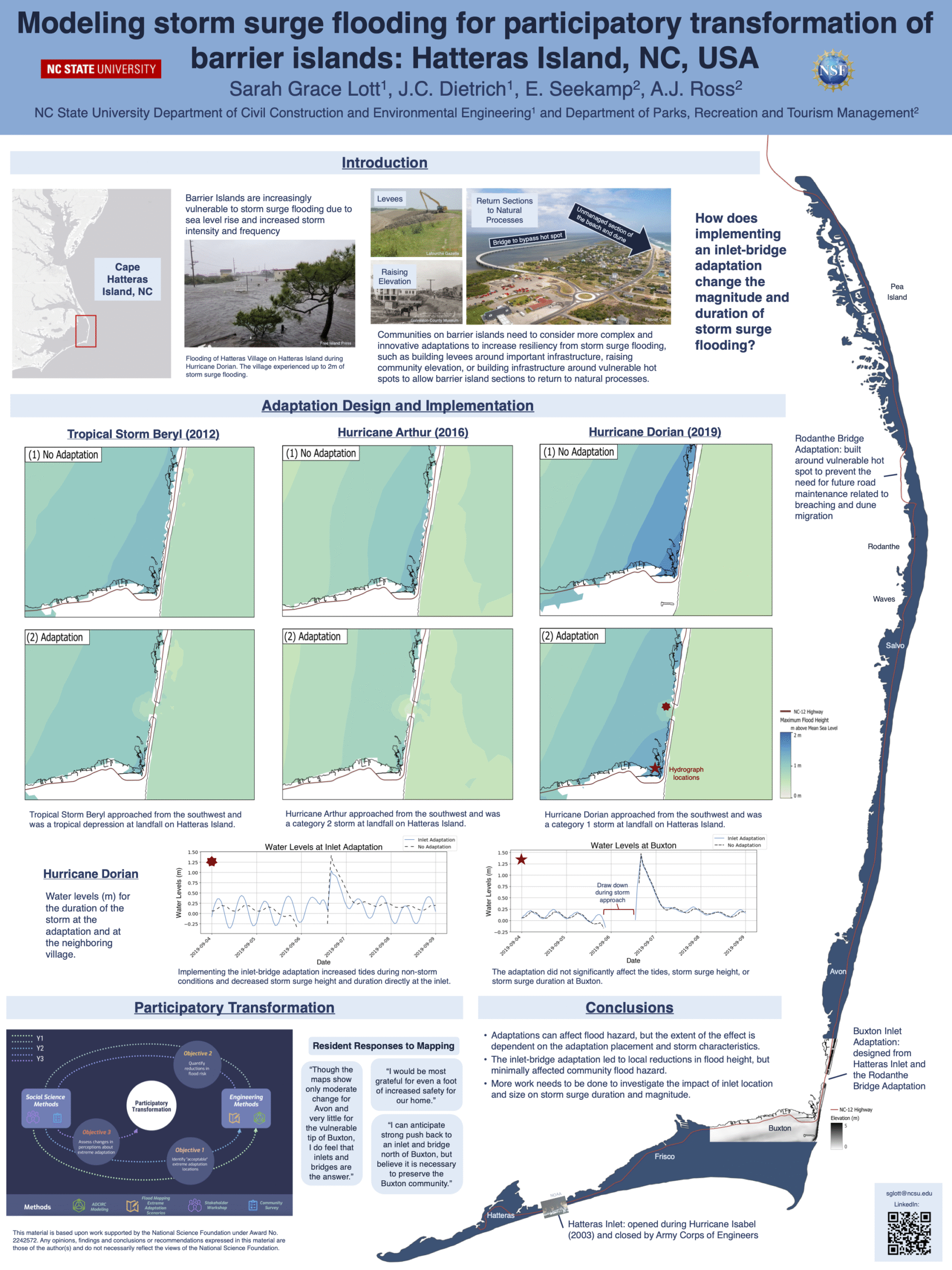
Modeling storm surge flooding for participatory transformation of barrier islands: Hatteras Island, NC, USA.
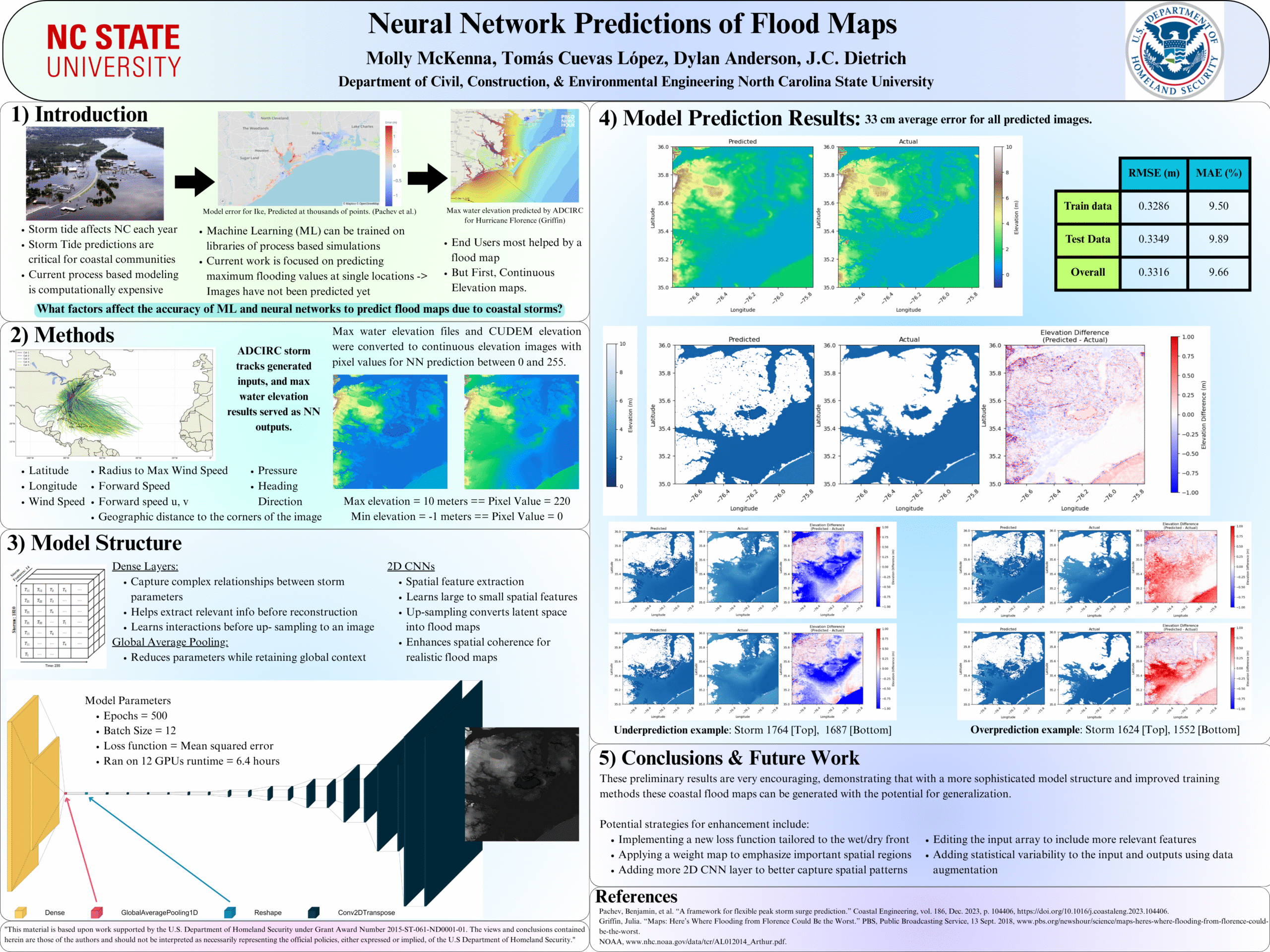
Neural Network Predictions of Flood Maps
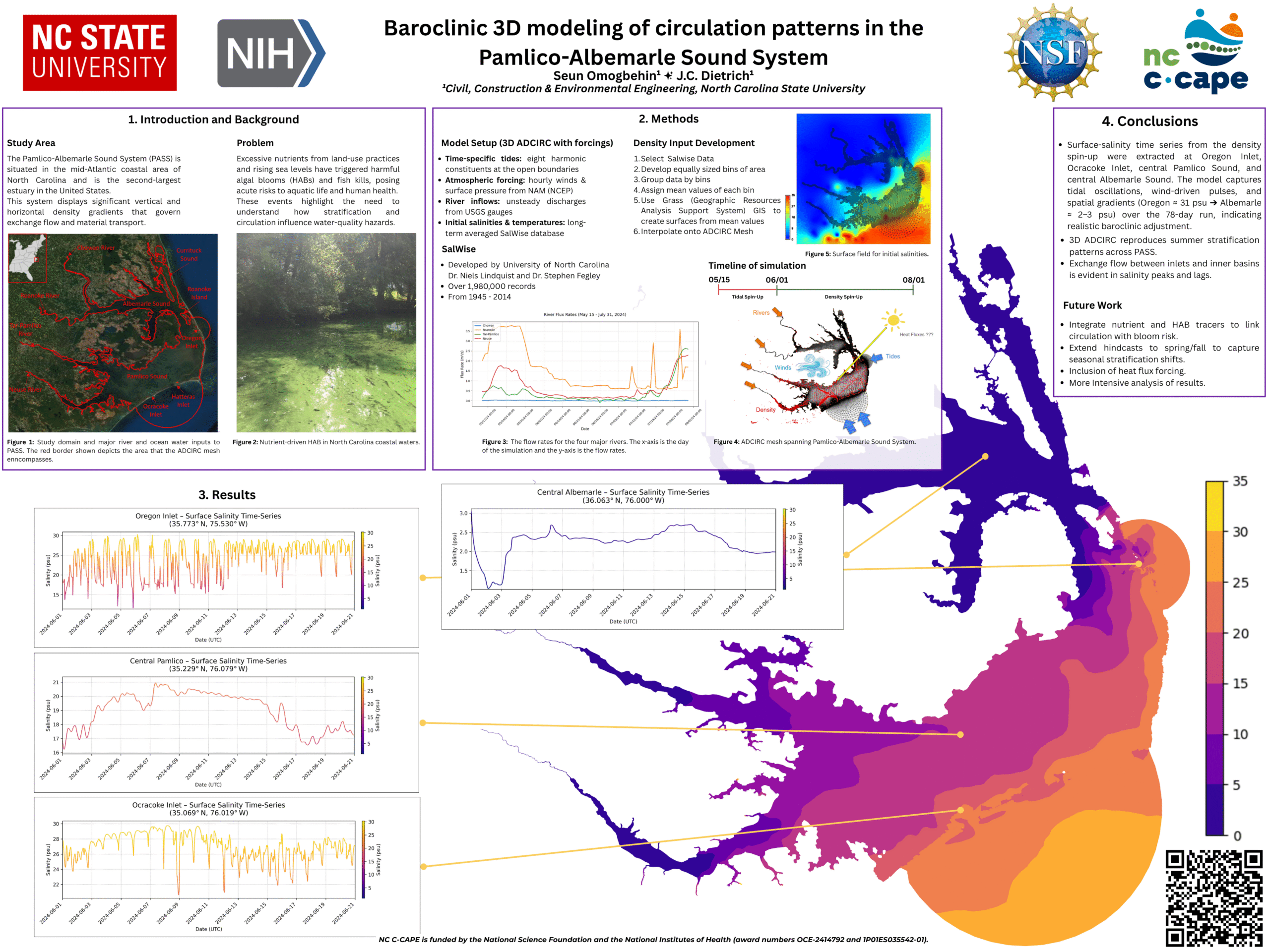
Baroclinic 3D modeling of circulation patterns in the Pamlico-Albemarle Sound System


Modeling storm surge flooding for participatory transformation of barrier islands: Hatteras Island, NC, USA.

Neural Network Predictions of Flood Maps

Baroclinic 3D modeling of circulation patterns in the Pamlico-Albemarle Sound System
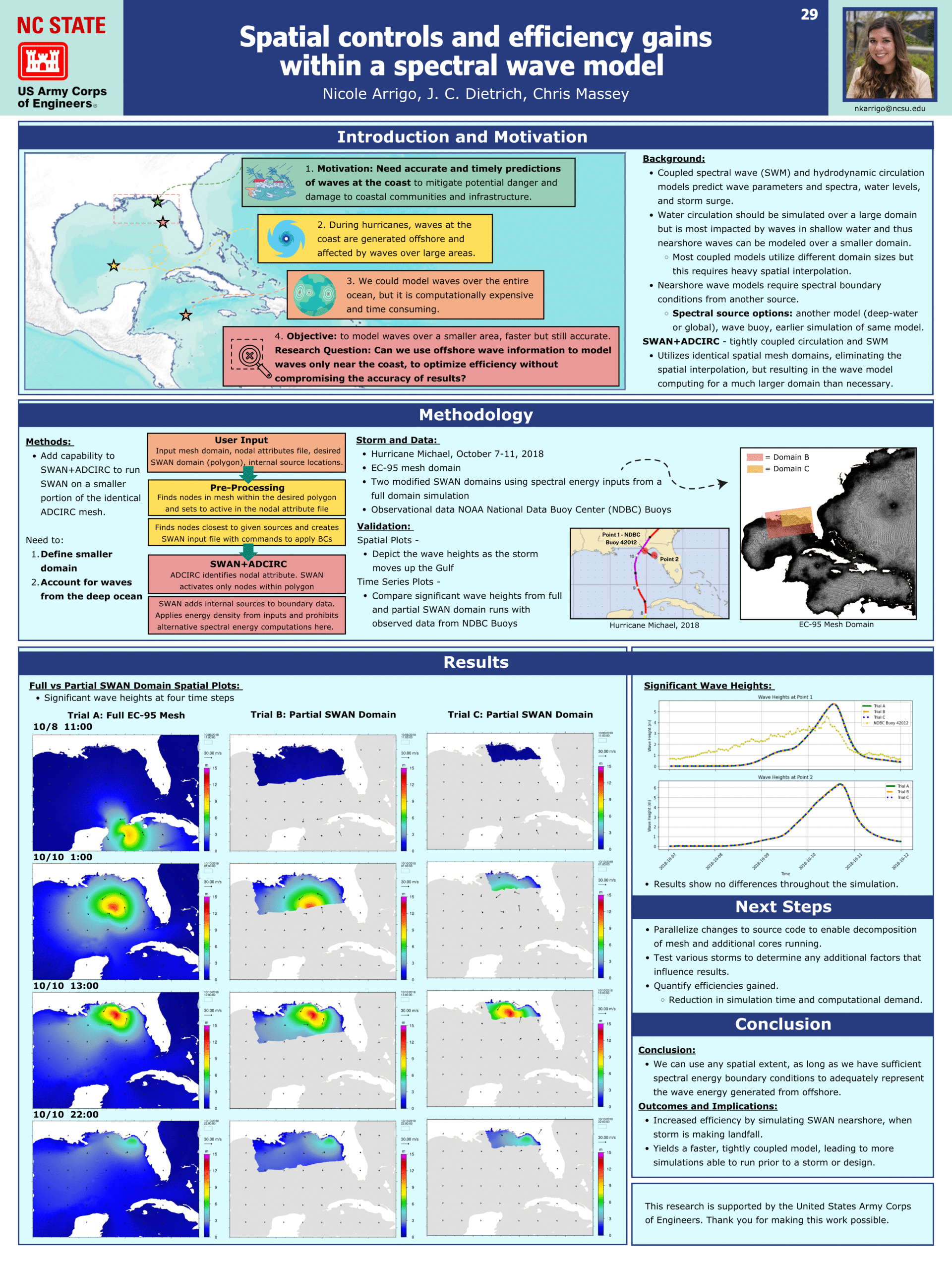
Spatial controls and efficiency gains within a spectral wave model.
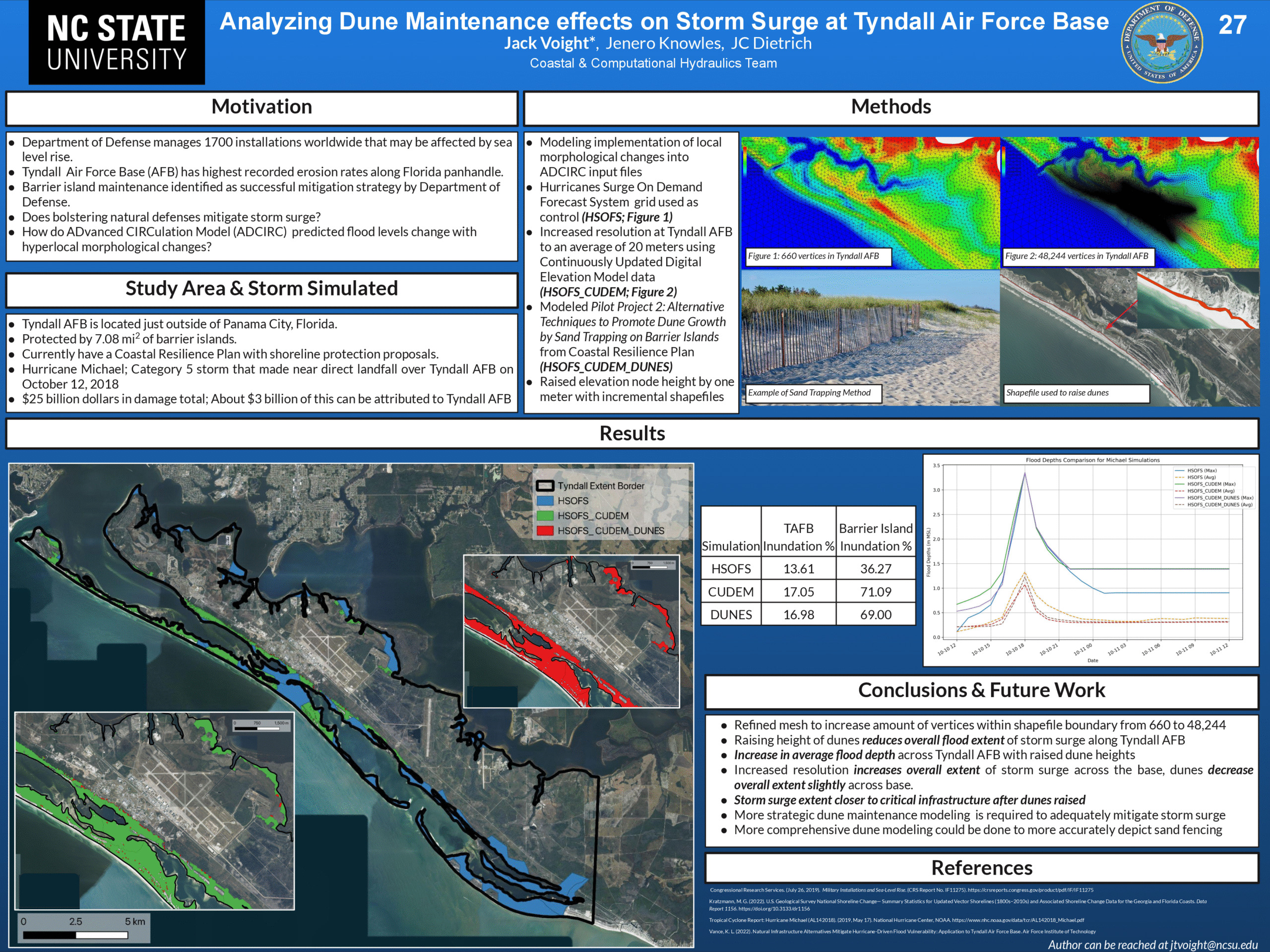
Analyzing Dune Maintenance effects on Storm Surge at Tyndall Air Force Base.
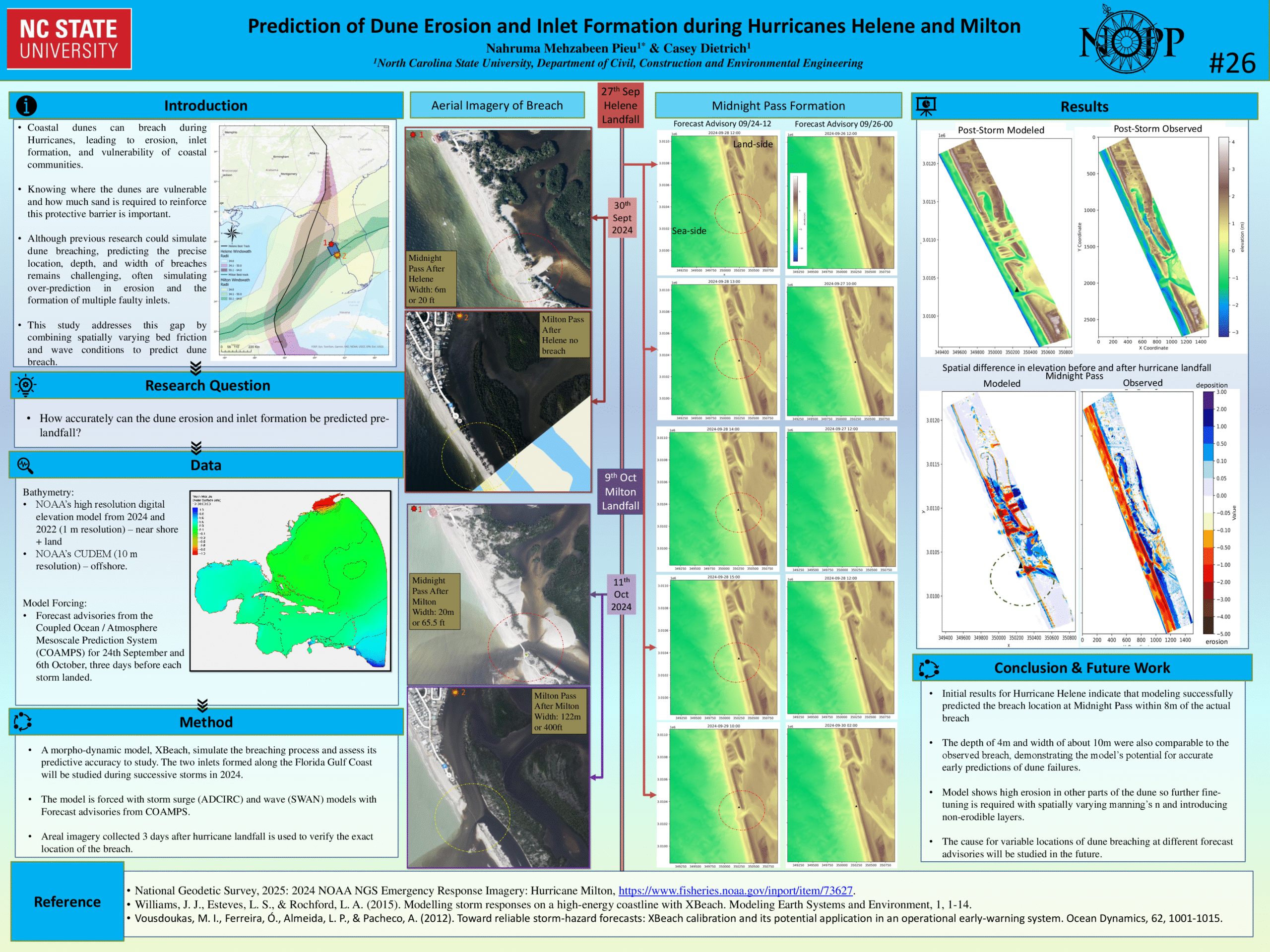
Prediction of Dune Erosion and Inlet Formation during Hurricanes Helene and Milton.
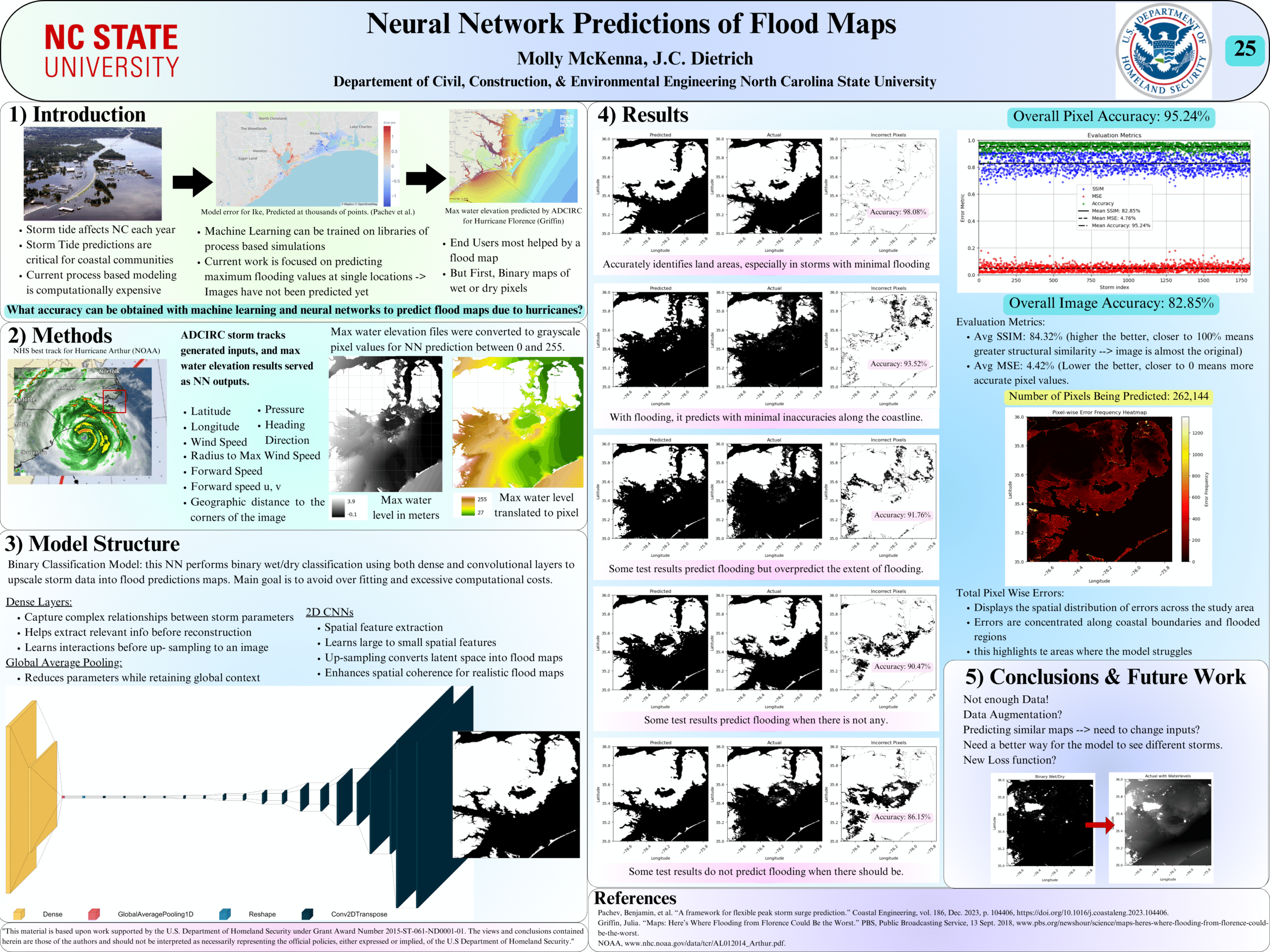
Neural Network Predictions of Flood Maps
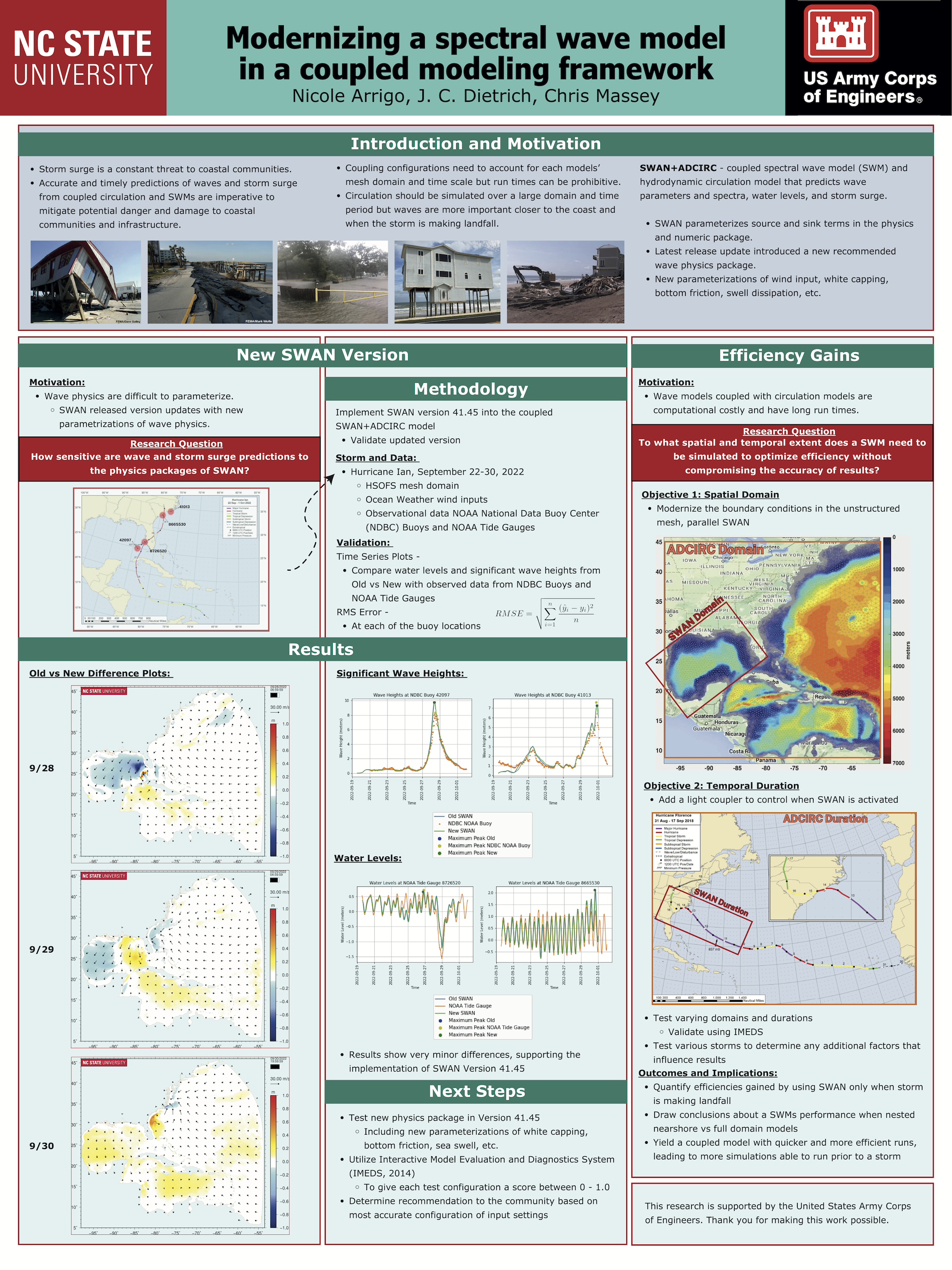
Modernizing a Spectral Wave Model in a Coupled Modeling Framework
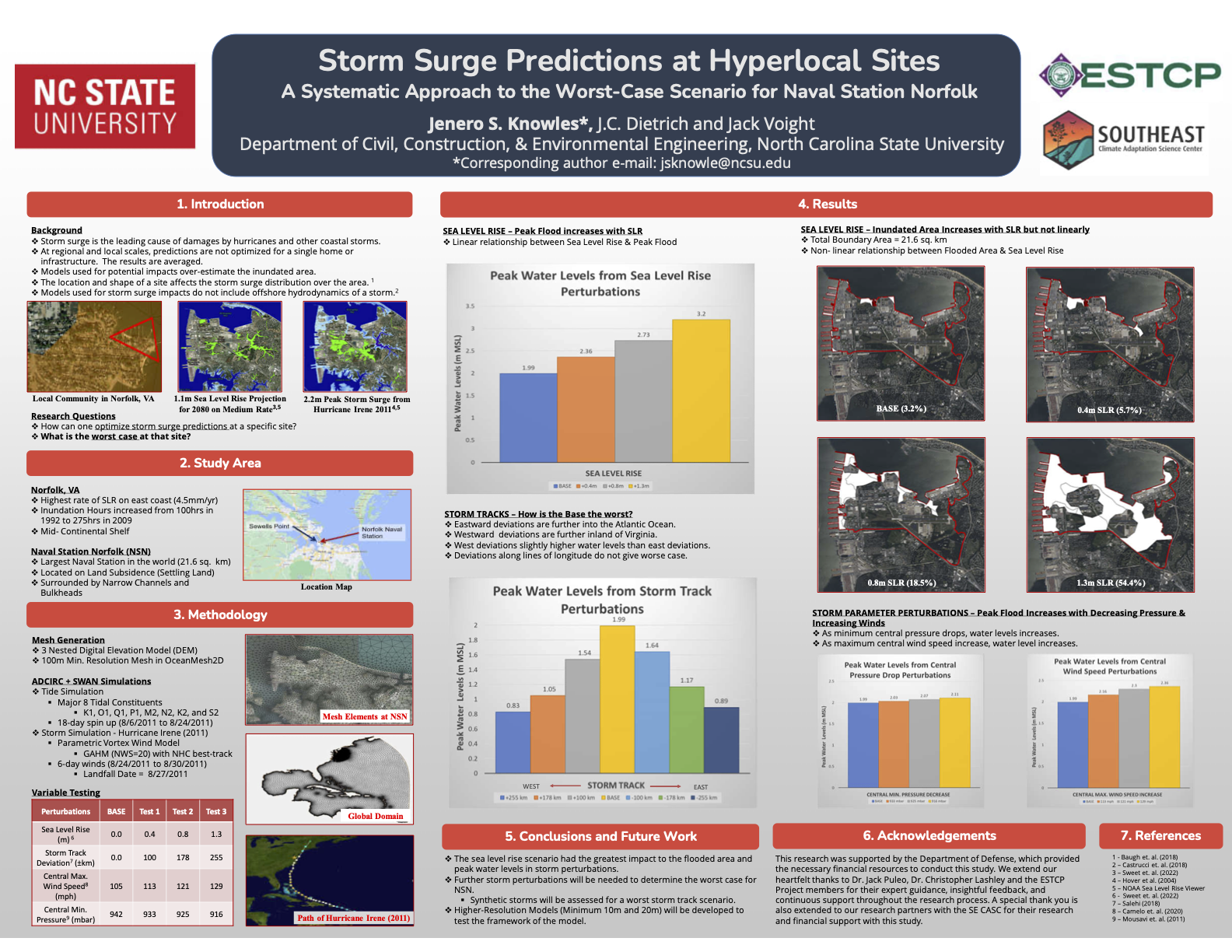
Storm Surge Predictions at Hyperlocal Sites
Thus, there are remaining research questions related to how to improve the performance of a spectral wave model in a coupled modeling framework. What are the tradeoffs when a spectral wave model is nested nearshore and receives boundary conditions from other sources? Over what period should the spectral wave model simulate as a storm approaches a coast? Can this research lead to guidance or best practices for coupled modeling applications? This project will focus on the Simulating WAves Nearshore (SWAN) model and SWAN+ADCIRC framework, but the project findings will be transferable to other spectral wave models and frameworks. We aim to improve the ability to nest spectral wave models in both space and time, via modernization of boundary conditions and a coupled model controller, and thus improve computational efficiency.
JC Dietrich. “Efficiency gains for spectral wave models in coupled frameworks.” Department of Defense, Broad Agency Announcement, Engineer Research and Development Center, Coastal Hydraulics Laboratory, 2023/09/22 to 2025/09/21, $191,353 (Dietrich: $191,353).
 The Simulating WAves Nearshore (SWAN, Booij et al. 1999) model is used widely for predictions of waves in coastal regions. Like other spectral wave models, SWAN uses parameterizations to represent wave evolution due to sources (e.g. wind), sinks (e.g. whitecapping, bottom friction, depth-limited breaking), and resonance (e.g. quadruplet and triad wave-wave interactions). Each parameterization is based typically on observational data to represent the transfer of energy to, from, and between waves. It is necessary for each term to represent its physical process, but it is also necessary for the terms to be calibrated collectively to represent their combined effects on wave evolution. The calibrated wave predictions can then be coupled with models for circulation and coastal flooding, e.g. ADvanced CIRCulation (ADCIRC, Luettich et al. 1992).
The Simulating WAves Nearshore (SWAN, Booij et al. 1999) model is used widely for predictions of waves in coastal regions. Like other spectral wave models, SWAN uses parameterizations to represent wave evolution due to sources (e.g. wind), sinks (e.g. whitecapping, bottom friction, depth-limited breaking), and resonance (e.g. quadruplet and triad wave-wave interactions). Each parameterization is based typically on observational data to represent the transfer of energy to, from, and between waves. It is necessary for each term to represent its physical process, but it is also necessary for the terms to be calibrated collectively to represent their combined effects on wave evolution. The calibrated wave predictions can then be coupled with models for circulation and coastal flooding, e.g. ADvanced CIRCulation (ADCIRC, Luettich et al. 1992).
SWAN release version 41.20 included a new “package” of wave physics (referred to as ST6 physics). This package has new parameterizations of wind input, whitecapping, swell dissipation, wind speed scaling, and other processes (Rogers et al. 2012). The ST6 physics have been adopted by other wave models (e.g. NOAA’s WaveWatch III, Liu et al. 2019), and it may become the preferred physics package for SWAN. However, because the ST6 physics package has changes to so many parameterizations, it is necessary to quantify its effects on wave predictions. Recent studies (e.g. Aydogan and Ayat 2021) have demonstrated the benefits of using the ST6 physics in the standalone version of SWAN, but its effects have not been quantified for the coupled ADCIRC+SWAN (Dietrich et al. 2011a), which is used for real-time forecasts during impending storms. Do the ST6 physics improve the ADCIRC+SWAN wave predictions?
These analyses were performed by Carter Day, an undergraduate researcher in our team.
Like other spectral wave models, SWAN uses parameterizations to represent sources (e.g. wind), sinks (e.g. whitecapping, bottom friction, depth-limited breaking), and resonance (e.g. quadruplet and triad wave-wave interactions). Each parameterization is based on laboratory and experimental data to represent the transfer of energy to, from, and between waves. It is necessary for each term to represent its physical process, but it is also necessary for the terms to be calibrated collectively to represent their combined effects on wave evolution.
SWAN release version 41.31 was modified in two main ways: derivative computation was changed to use the Green-Gauss formula, and a new ‘package’ of wave physics (the so-called ST6 physics) was introduced. This package includes new parameterizations of wind input, whitecapping, swell dissipation, wind speed scaling, and other processes. The ST6 physics have been adopted by other wave models (e.g. NOAA’s WaveWatch III), and it will likely become the preferred physics package for SWAN. However, because the ST6 physics package has changes to so many parameterizations, it is necessary to quantify its effects on wave predictions during recent storms.
In this study, we simulate two recent hurricanes, Gustav (2008) and Florence (2018), and we compare wave predictions with the new ST6 physics package. Do the ST6 physics improve the SWAN wave predictions?